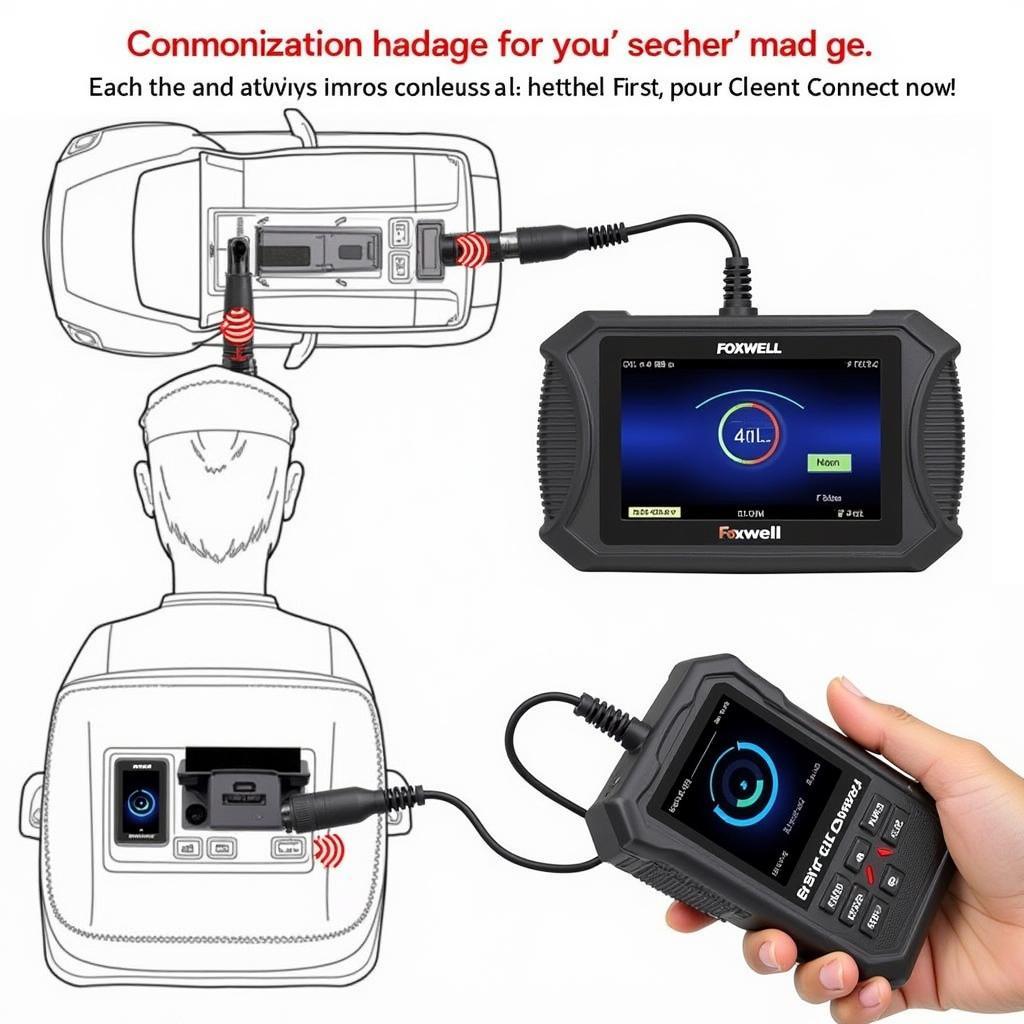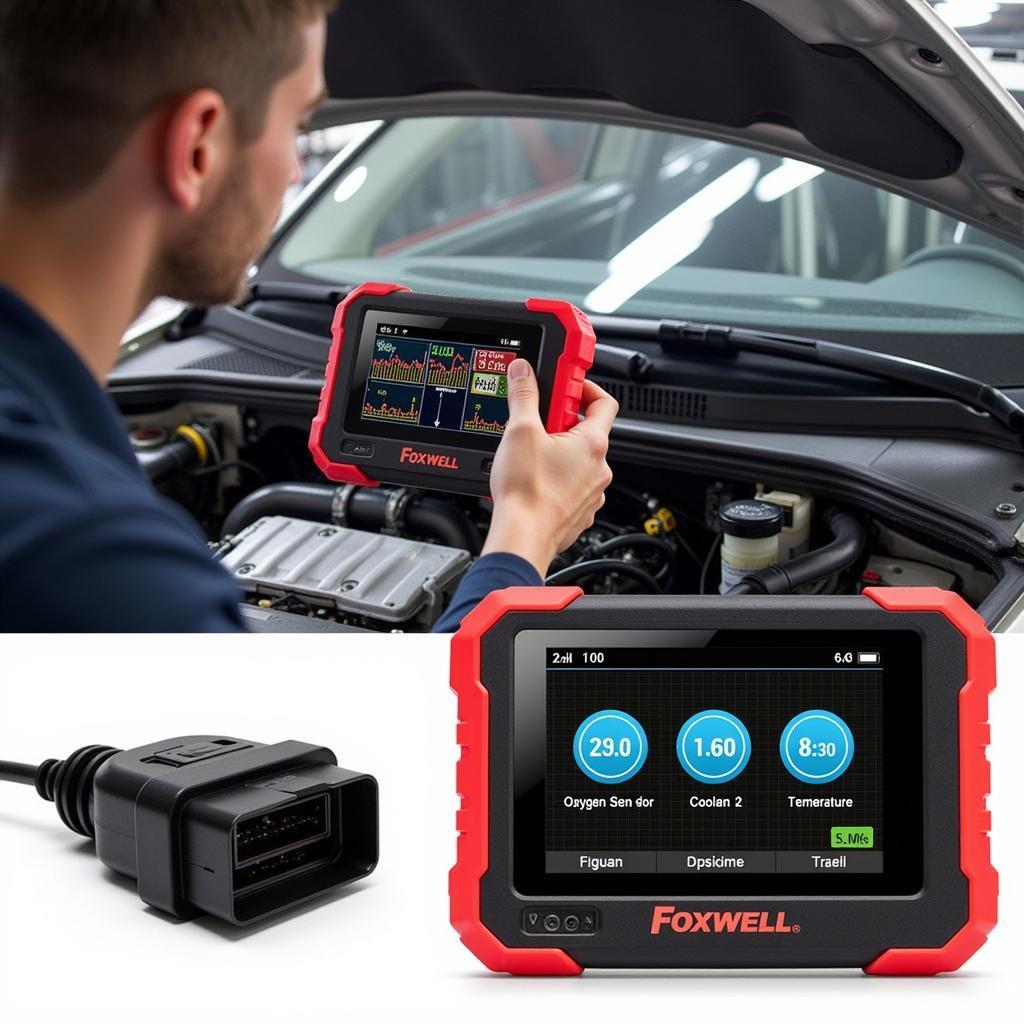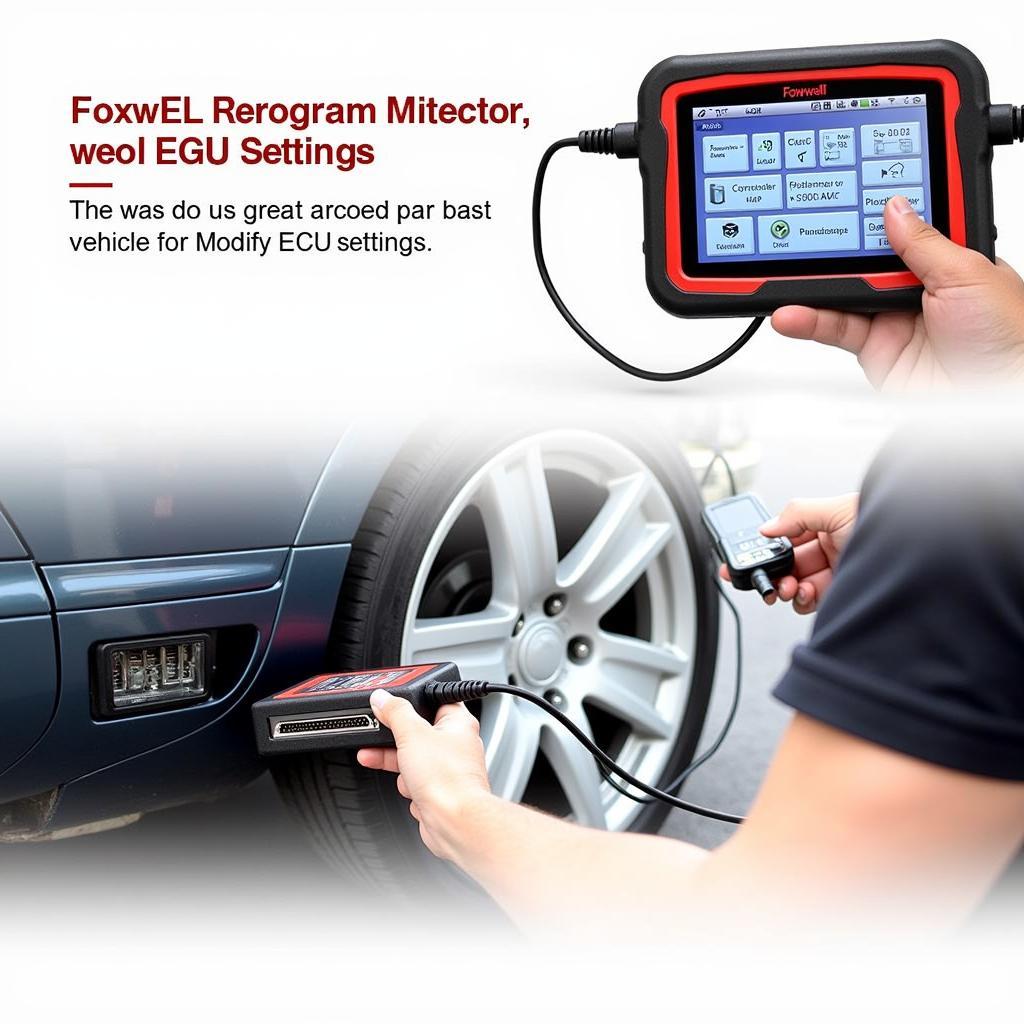The Foxwell 510 diagnostic scanner is a powerful tool for car owners and mechanics alike. This comprehensive guide will provide you with the Foxwell 510 instructions you need to effectively diagnose and troubleshoot car problems, from understanding basic functions to advanced techniques. Let’s dive into the world of automotive diagnostics with the Foxwell 510.
Getting Started with Your Foxwell 510
Before you start using your Foxwell 510, it’s essential to familiarize yourself with the device. This section covers the initial setup and basic operations, preparing you for effective vehicle diagnostics.
Initial Setup and Basic Operations
- Powering On: Connect the Foxwell 510 to your vehicle’s OBD-II port, usually located under the dashboard on the driver’s side. Turn the ignition key to the “on” position without starting the engine. The device should power on automatically.
- Vehicle Selection: After powering on, the Foxwell 510 will prompt you to select the vehicle’s make, model, and year. Ensure accurate selection for proper diagnosis.
- Main Menu Navigation: The main menu presents various diagnostic options, including reading and clearing diagnostic trouble codes (DTCs), viewing live data streams, and performing special functions.
- Basic Code Reading: Select “Read Codes” to retrieve any stored DTCs. This function identifies potential issues within various vehicle systems.
 Foxwell 510 OBD-II Connection and Setup
Foxwell 510 OBD-II Connection and Setup
Understanding Foxwell 510 Instructions for Diagnostics
This section focuses on using the Foxwell 510 for effective vehicle diagnostics, covering code reading, live data interpretation, and special functions.
Reading and Clearing Diagnostic Trouble Codes (DTCs)
The Foxwell 510 allows you to read and clear DTCs, essential for identifying and resolving vehicle issues. After reading the codes, take note of the code number and description to further research the problem. Clearing codes resets the check engine light and allows you to confirm if the issue has been resolved.
Interpreting Live Data Streams
Live data streams provide real-time insights into various vehicle sensors and systems. This feature allows you to monitor sensor readings during operation, aiding in identifying intermittent problems or verifying repairs. Understanding the meaning of these data streams is crucial for accurate diagnosis.
Utilizing Special Functions
The Foxwell 510 offers special functions specific to certain vehicle makes and models. These functions can include resetting oil service lights, performing ABS bleeding procedures, and calibrating various sensors. Consult the user manual for specific instructions related to your vehicle.
Advanced Foxwell 510 Techniques
For experienced users, the Foxwell 510 offers advanced features to delve deeper into vehicle diagnostics.
Performing Component Tests
The component test function allows you to activate specific components, such as fuel injectors or relays, to verify their operation. This can be helpful in isolating faulty components.
Graphing Live Data
Graphing live data provides a visual representation of sensor readings over time, allowing you to identify patterns and trends that might not be apparent in numerical data.
Updating the Foxwell 510
Regular updates ensure the Foxwell 510 has the latest software and vehicle coverage. Connect the device to a computer with internet access and follow the instructions on the Foxwell website to download and install updates.
“Staying current with software updates is crucial for accurate diagnostics,” says automotive expert, David Miller, ASE Master Technician. “New vehicle models and diagnostic procedures are constantly being added.”
Foxwell 510 Troubleshooting and Tips
Encountering problems with your Foxwell 510? This section offers troubleshooting tips and common solutions.
Common Issues and Solutions
- Connection Problems: Ensure the OBD-II connector is securely plugged into the vehicle’s port. Check for damaged cables or connectors.
- Software Errors: Try restarting the device or performing a software update.
- Vehicle Compatibility: Verify that the Foxwell 510 supports your specific vehicle make, model, and year.
“Don’t hesitate to contact customer support if you encounter any issues,” advises Sarah Johnson, Automotive Electronics Specialist. “They can provide valuable assistance and guidance.”
Conclusion
The Foxwell 510 is a valuable tool for anyone seeking to understand and address their vehicle’s diagnostic needs. By following these Foxwell 510 instructions and exploring its various features, you can effectively diagnose and troubleshoot car problems. For further assistance, connect with ScanToolUS at +1 (641) 206-8880 or visit our office at 1615 S Laramie Ave, Cicero, IL 60804, USA.


